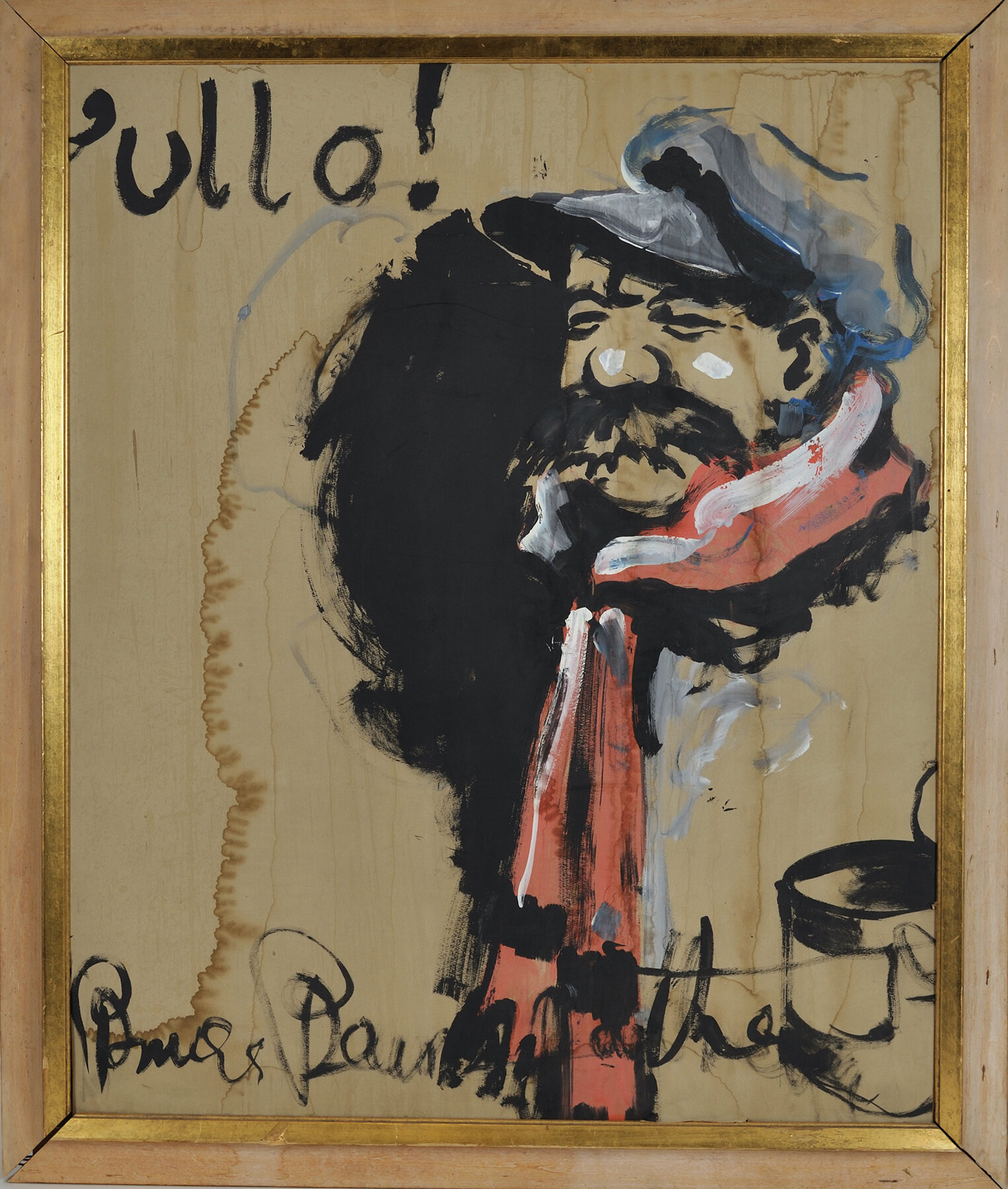curated by Aimee Benoit
Here I was, in this horrible clay cavity, somewhere in Belgium, miles and miles from home. Cold, wet through and covered with mud…so far as I could see, the future contained nothing but repetitions of the same thing, or worse.
—Bruce Bairnsfather, Bullets and Billets, 1916
The First World War (1914–1918) was one of the most grueling and deadly conflicts in history, yet soldiers on the front lines made the best of it. British machine-gun officer Bruce Bairnsfather (1887–1959) entertained his comrades by sketching cartoons on rough bits of paper. The drawings were passed up and down the lines, conveying the humour and absurdity of life in the muddy Belgian trenches.
Cartoon, 1916.
Bairnsfather’s most famous work, this cartoon was featured on the cover of Fragments from France, his first published collection of drawings. The first issue sold 250,000 copies in its first year and was followed by seven more volumes.
Courtesy of Wikimedia Commons.
In 1916, Bairnsfather’s first collection of cartoons was published by The Bystander magazine, to instant success. At first, military officials worried that the images’ sarcastic view of war might slow recruitment efforts—but they soon recognized the value of humour in keeping up troops’ morale.
Bairnsfather was promoted to officer-cartoonist and spent the next three years turning tragedy into laughter. His cartoons became a common language for soldiers across the Western Front, and a way to share, with loved ones at home, a war that could not be put into words.
Old Bill, as published in Bullets and Billets, 1916.
Courtesy of Wikimedia Commons.
The Anti-Hero
Capt. Bairnsfather’s drawings are very true to life, except the absurd visages of the soldiers. So you will be able to see for yourself, not only what a soldier does but what he thinks. Please do not destroy this copy as I value it greatly. So when you are thru with it just tuck it away somewhere so that I can laugh at those same pictures when I go home.
—Inscription from No.1 Canadian Field Ambulance soldier to his mother (Fragments from France vol. 1, Glenbow Library, 940.30207 B163f Pam)
Bairnsfather’s genius was his ability to poke fun at everyday incidents and hardships, in a way that rang true to other enlisted men. His characters took on a life of their own and had a humanity that resisted the brutal effects of war.
The most beloved of Bairnsfather’s characters was “Old Bill” Busby, a seasoned, grumbling soldier with a famously bushy moustache. With his pals Bert and Alf, Old Bill was an anti-hero next to the brave, patriotic figures shown in home front propaganda. He embodied the “everyman” soldier: his fears, stresses, and nostalgia for home—but also his determination to carry on. As the Lethbridge Herald commented in 1920, “He is a type that took things as they found them, and made the best of them. It was the spirit of the ‘Old Bills’ that won the war.”
Transition to Peace
The creator of Old Bill has rendered a great service to his country, both as a soldier and as one who has done much to lighten the darkest hour… Though the clouds of war have lifted, we still need his cheery optimism.
—General Sir Ian Hamilton, cited in Fragments from France, vol. 7
Ullo! Gouache on matte board. Donated by Royal Canadian Legion, Branch #4.
Bairnsfather typically ended his illustrated lectures by drawing two or three large sketches of Old Bill, which were auctioned for local veterans’ charities. This painting may have been created during a sold-out lecture he gave in Lethbridge in November 1920, or during a later tour. Old Bill was prominently displayed at the Lethbridge Legion for many years during the annual gathering of Vimy Ridge veterans.
Galt Museum & Archives, P20000047006.
During the course of the First World War, Bairnsfather’s work inspired countless imitations, including cartoons drawn by Canadian soldiers and published in trench newspapers. Even after the war ended in November 1918, Old Bill lived on in the public imagination. He starred in books, plays, films and eventually more war cartoons, this time for the American Forces during the Second World War.
Between 1920 and 1950, Bairnsfather made 11 tours across Canada and the United States. He gave an illustrated lecture in Lethbridge in November 1920, and returned at least twice. These visits speak to Bairnsfather’s broad impact across the English-speaking world—but also, amidst people’s desire to forget the horrors of war, an ongoing need to make sense of it all.
More than a century since the Armistice was signed, Bairnsfather’s work continues to offer a “bottom up” view of the unique soldiers’ culture that helped carry them through the war.
Commemorative teapot, ca. 1920–1930.
This example of Grimwade’s “Bairnsfather Ware” reproduces two of the artist’s most famous cartoons. Bairnsfather’s drawings were also made into ashtrays, puzzles, car mascots and other merchandise.
Galt Museum & Archives, P19739126000.
Commemorative plate, ca. 1920–1930. Donated by K. E. Hendrie.
In 1917 British pottery manufacturer Leonard Grimwade began reproducing Bairnsfather’s cartoons on teapots and dinnerware. The factory turned out thousands of ceramic mementos of the “Great War.”
Galt Museum & Archives, P19651930000.






